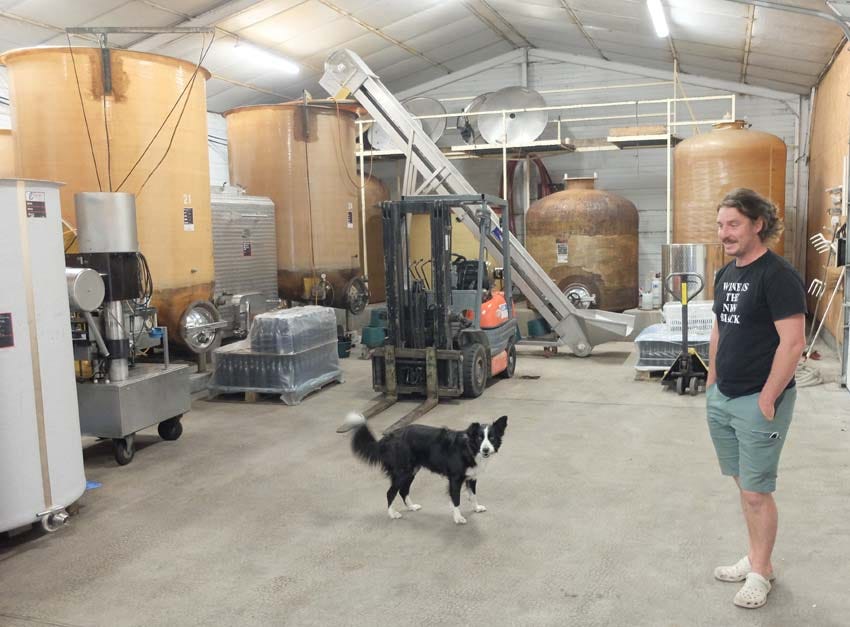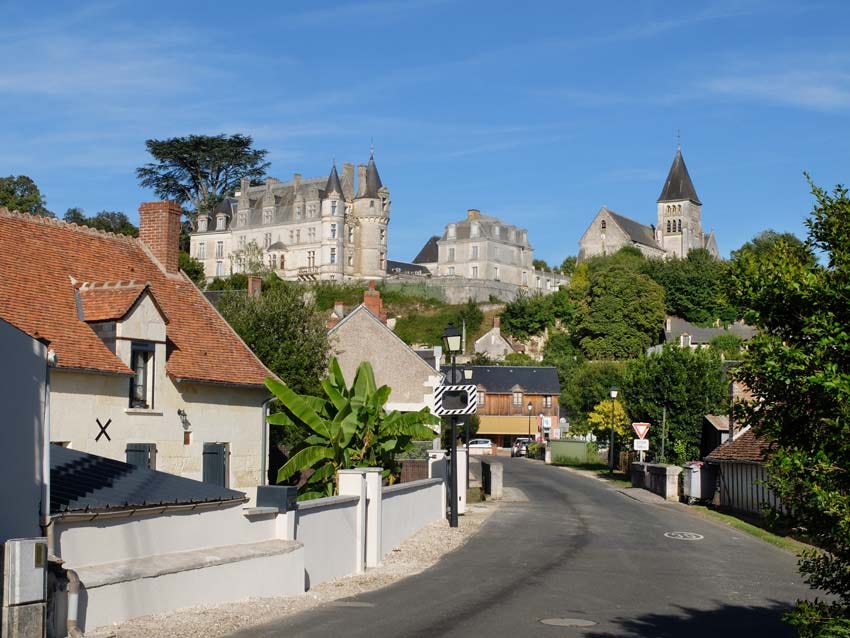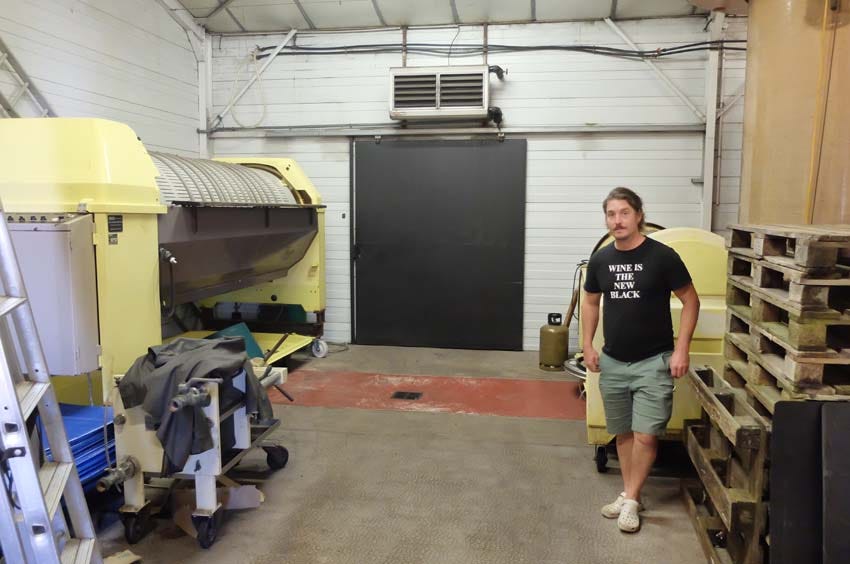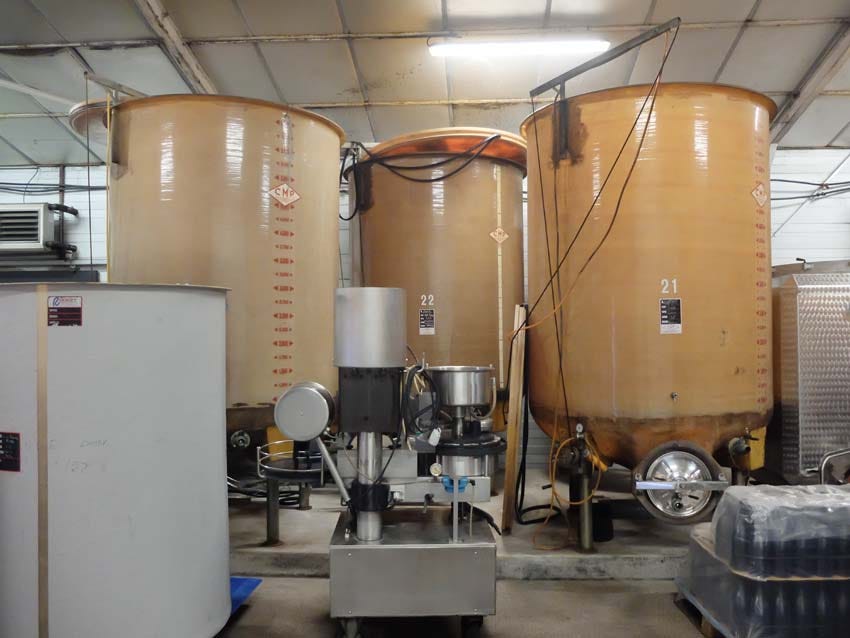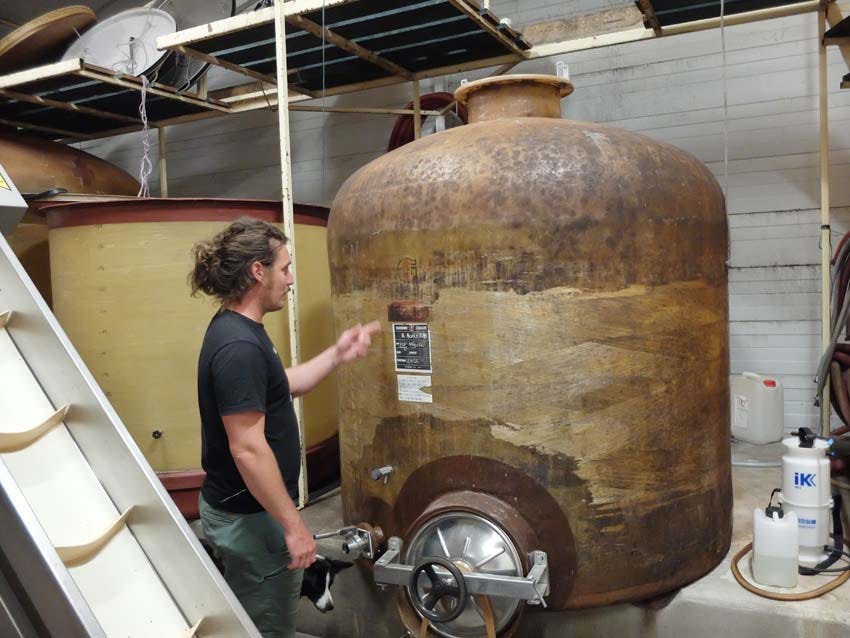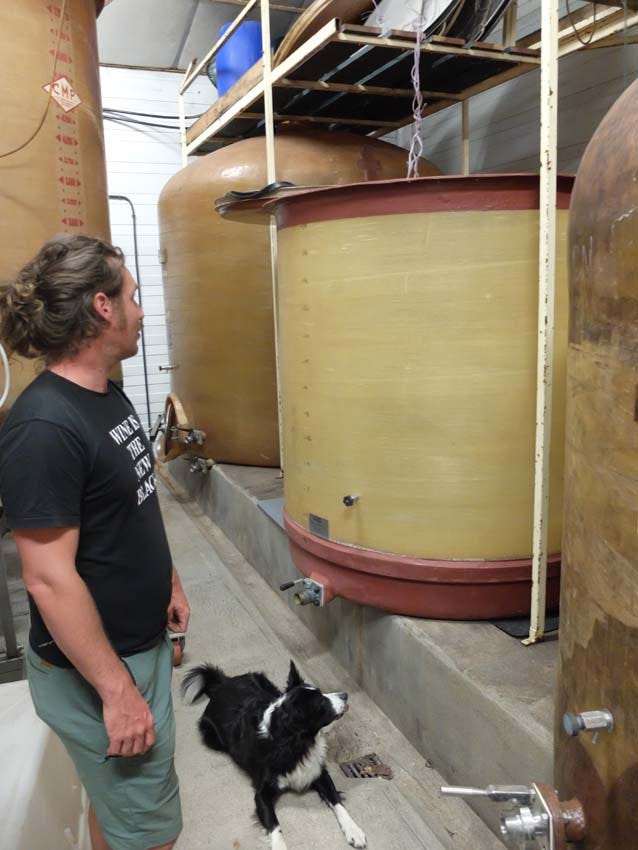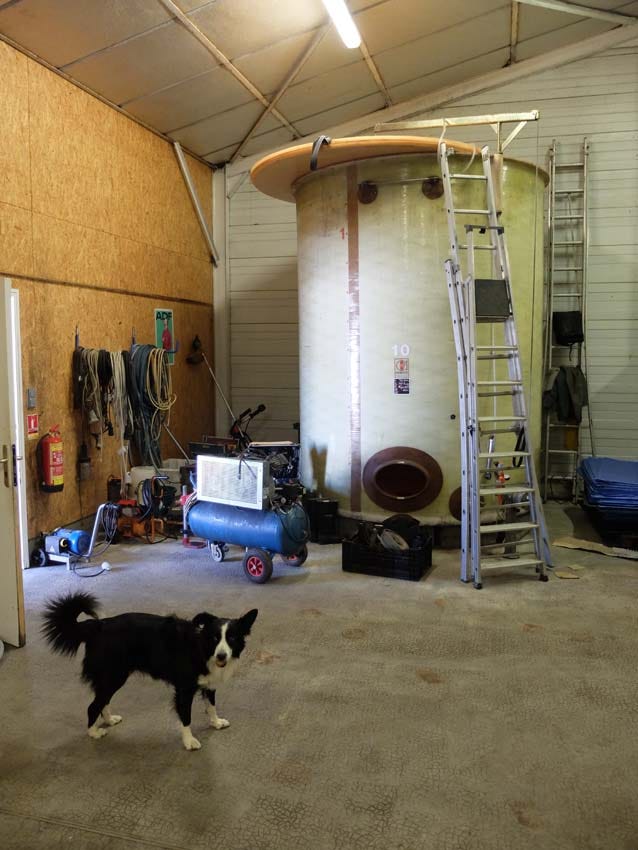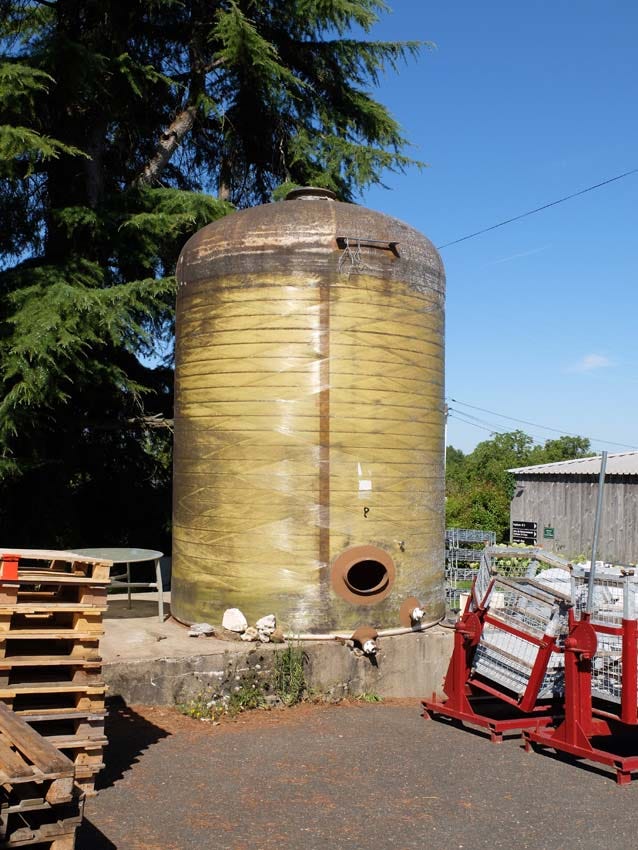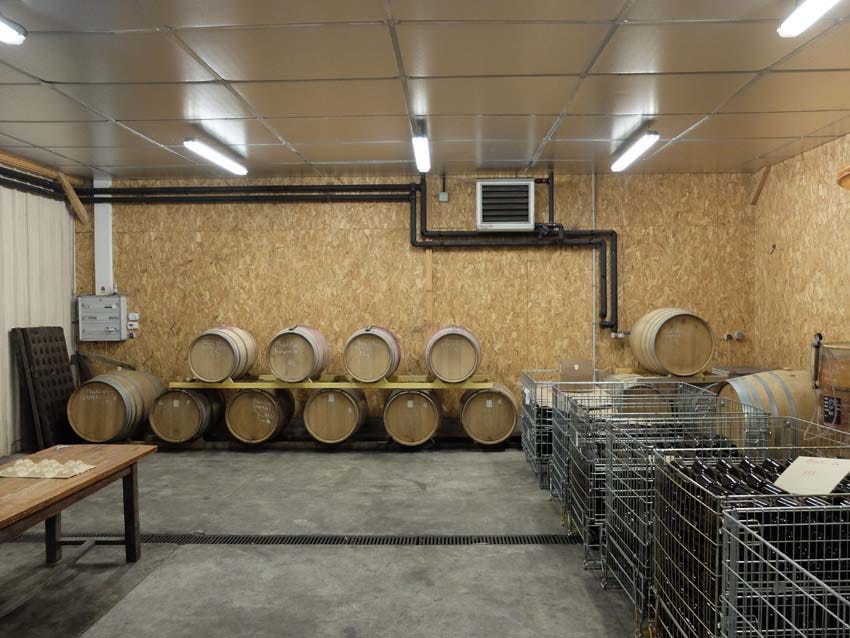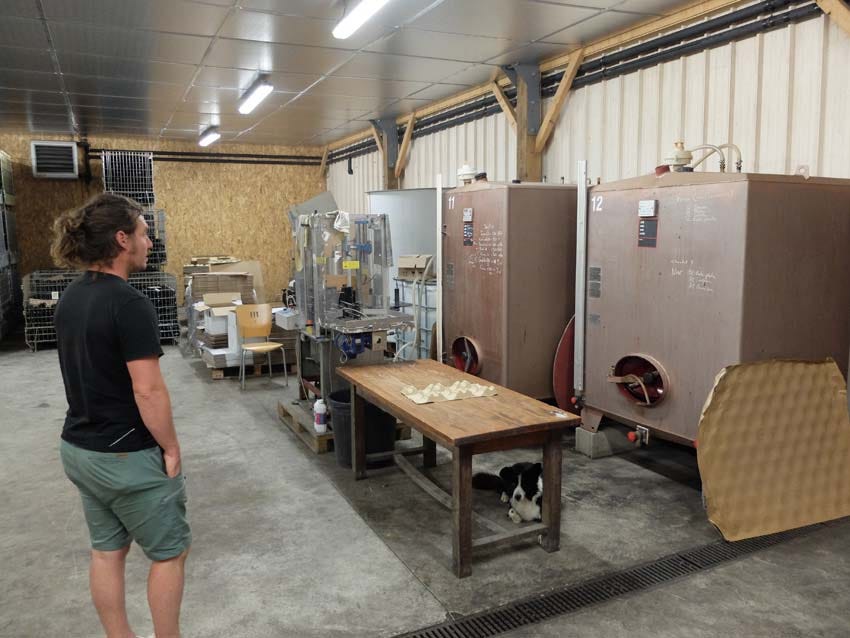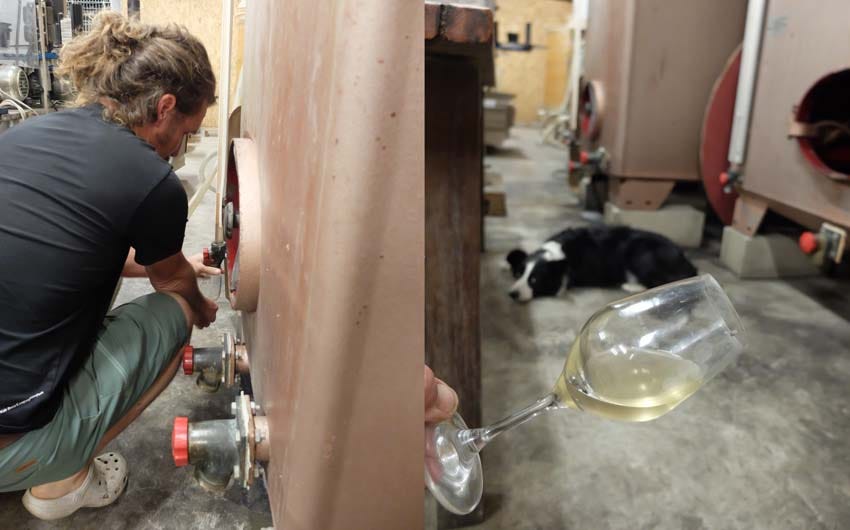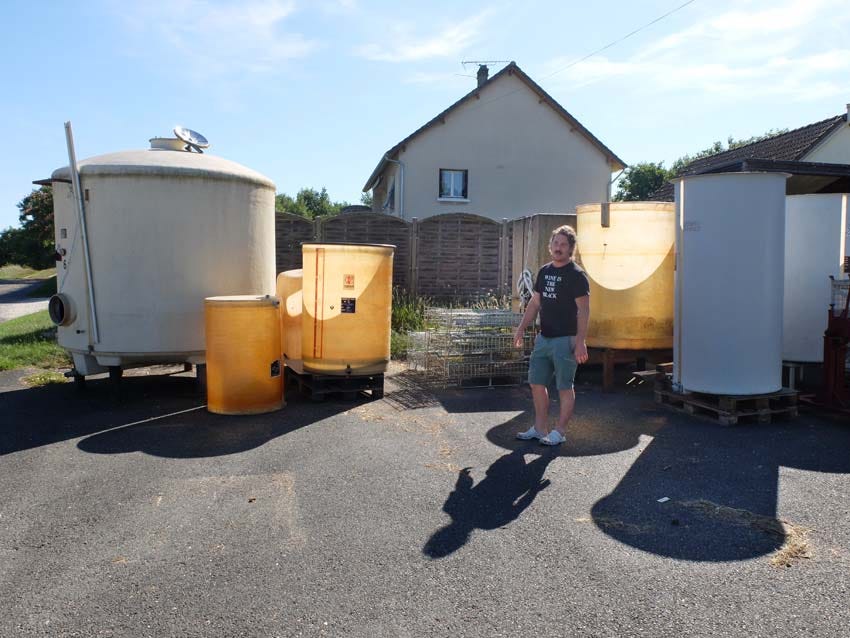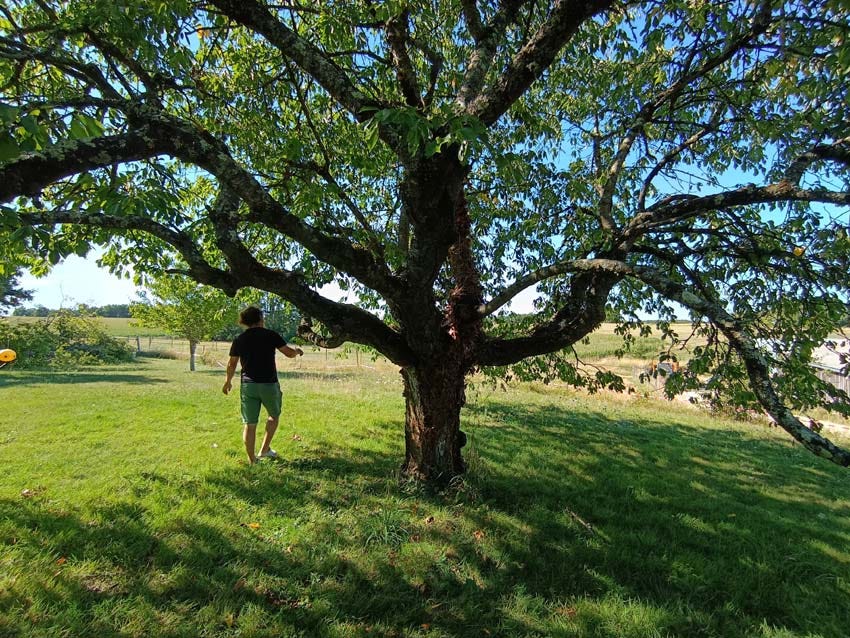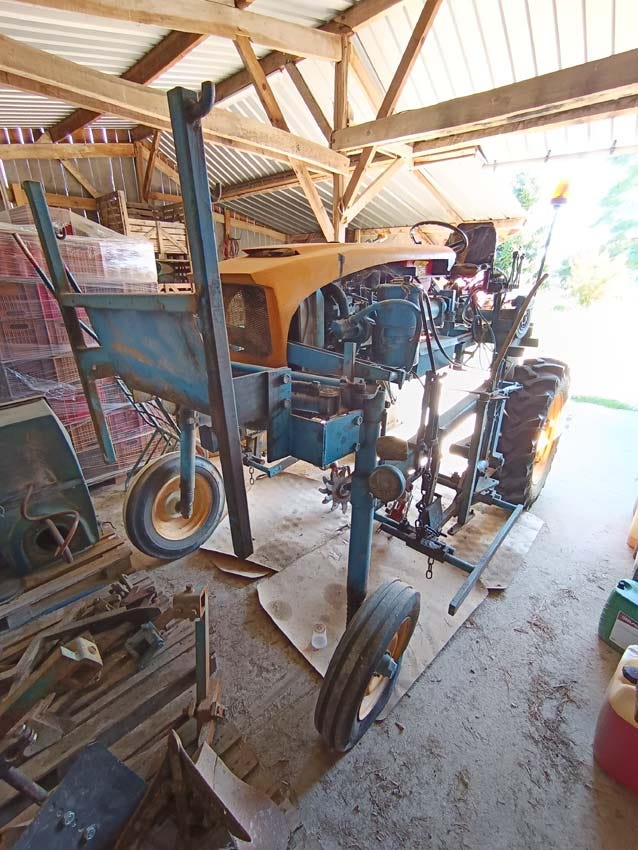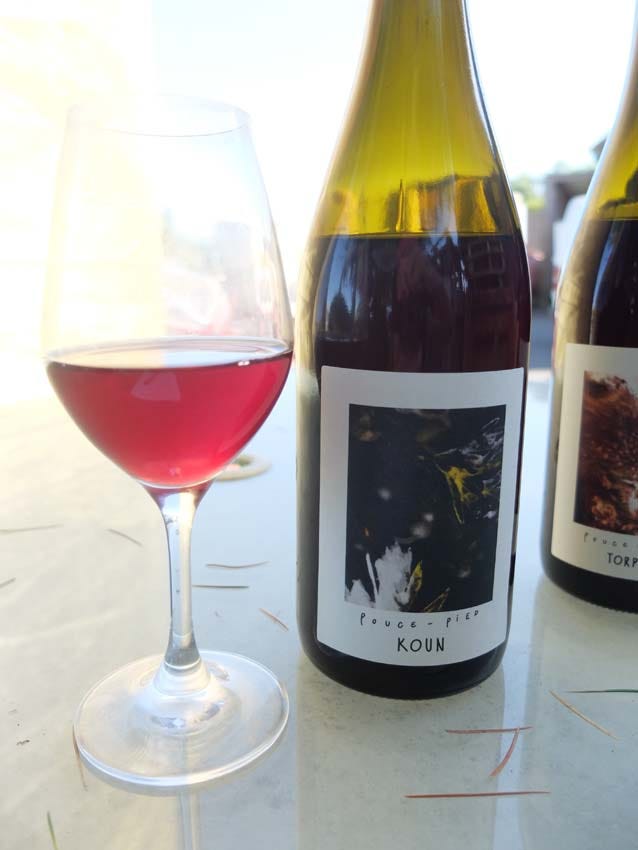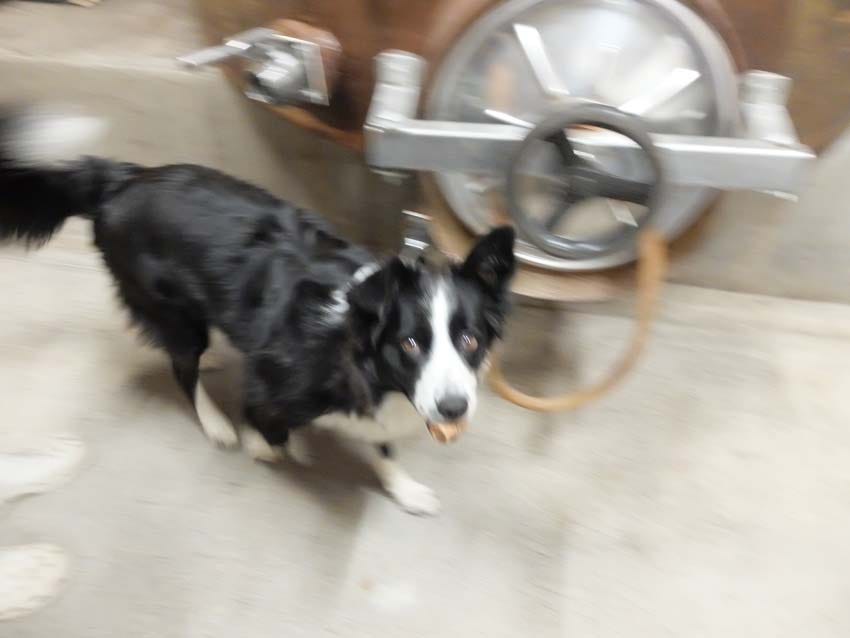Domaine Pouce Pied
Chateauvieux, Touraine (Loire)
The Domaine Pouce Pied was started 3 years ago by two friends, Corentin Allot and Sébastien Lincy who are originally from Brittany (from around Lorient if I'm right). They initially came around here in Touraine (Loire) for the grape harvest, then helped at the cellar, came back again and loved the trade. They ended up buying some parcels in 2023 and later set up the winery here in Chateauvieux [pic on left], a beautiful and quiet village with many cellars and cave houses [like on the pic on right].
Now they have 4 hectares spread over several villages but it's too outstreched and they're currently regrouping in order to be able to get to the different parcels easier for the vineyard work. This new parcel situation brings them to a surface of 5 hectares, located mostly in Saint Aignan, the small town nearby.
The charming village of Chateauvieux
It all started when a few friends of theirs from the Lorient area came in the region in 2008 to take part to the picking; Corentin and Sébastien soon followed suit and they landed at Hervé Villemade for the harvest. Several of these guys ended up staying to work there, like both of them as well as Corentin's sister who presently works at Villemade. In 2017 they both decided to fully work in the trade so they went to the viticulture school of Amboise, adding experience by working with different vignerons. They first looked in the Languedoc for the terroir, working at Domaine Léonine where Steph and Caro were very hepful, letting them learn in the chai with the winemaking. He also worked near Béziers at Jeff Coutelou, great experience, very friendly and enriching. This was just before the Wuhan-virus lockdown, so he stayed only 6 months and had to shorten the stay and get back to Brittany. And while looking at the southern terroirs was interesting, his goal was still to work in the Loire with the terroirs of the Cher valley or Cheverny, it's also because they had such a good human experience with the fellow winemakers and vineyard workers in that region.
After Coutelou he got back to this part of the Loire and worked at least 3 years with Noëlla Morantin where he worked a lot in the vineyard, getting experience with the tractors and plowing works, this was another nice experience. At the time he was sharing a rental with his now-associate Sébastien Lincy who himself was working at Julien Pineau. Both of them had a very similar background and route Seb having worked at villemade, Thierry Puzelat, P.O. Bonhomme, so they shared the same world view regarding winemaking and artisan farming.
They bought this facility building in 2023 from Florence of Domaine de la Chapinière who recently retired (I wrote a profile of La Chapinière a few years ago), most of her 14-hectare surface being purchased by a big player of the region. They were very lucky to find this facility because it's fully operational, clean and allow good working conditions from the start, which is not always the case when you start you winery (that's what they were looking for, but without thinking they would). They had visited quite a few places many needing to be fixed, including one very small which they were ready to buy but after leaving small posters here and there including in a viticulture-products shop they were contacted by Florence and that was it.
The facility already had a few tanks but they bought these four 60-hectoliter tanks (with floating lid) at an auction near Angé, further West in the Cher valley, they were very cheap also.
Speaking of their parcels they had 1,5 hectare of Sauvignon, 20 ares of Chenin Blanc, 70 ares of Cabernet [Franc I suppose] and 50 ares of Gamay, and this year they got also 60 ares planted with Gamay, Cabernet and Chenin (near Saint Aignan), plus 3 hectares surrounded by woods and planted with 10 different varieties (5 reds, 5 whites), this will be very nice, for small blends or single-variety cuvées. They also have a négoce part and will keep one, buying grapes from different organic growers from the Cher Valley. The grape purchases are also good for the exchange side, the growers they work with being great people who love their work, it's always a pleasure to do things together. And they try to keep the same parcels year after year to follow the juices styles and the terroirs. For example they buy from Simon Tardieu a Pineau d'Aunis which they vinify as a light-color red (this year they blend it with a Pinot Noir from Julien Moreau).
Here the wines are unfiltered and they only add SO2 if there's an issue with the wine, for example if after a test at open air they feel a mousiness threat, they'll add a bit of it (they saw a difference as a result with 0,5 gram/ho on a petnat that otherwise had a bit of mousiness).
Strange tank
They got this one from Les Capriades, it's also a self-emptying tank, it's also a fiber<:resin tank, so it's pretty easy to move them when empty. They had the Aunis from Fabrice Delaunay in here, it was used for the maceration of the cuvée Koun.
Whatever, they got tools from different winemakers they know, like this tank that they got from Laetitia Castaing, a winemaker of the area I met a few times (here scrolling down to the 20th picture of this story on women winemakers) and should visit one of these days.
This one was already in the vat room, left by Florence the former owner, it's a 120-hectoliter tank, very convenient to make the blends or the rackings, for example last year they had a juice for the sparkling which was very active and a bubbling a bit too much while fermenting, so they decided to make successive rackings in order to take off the lees each time and thus deplete the yeast environment to quiet down the fermentation, which worked quiet well.
This one was already there also, but really big (300 hectoliters), they're not sure to have the opportunity to use it; they have a friend who has bigger volumes and could possibly make use of it but it's tricky to have it moved on a truck, not only because of its size but because there's a risk the fiber/resin tank could crack when moved to a lying position.
This is the barrel cellar, also a surface room in the back of the vat room, it's even more insulated with air conditioning if needed, like with the recent heat wave, and with the inertia, even after they stop cooling, the room temperature remained stable. This room holds also a few élevage tanks on the side, plus the bottling line.
Elevage tanks in the cellar part
Right now they have more reds than whites an the total number of cuvées is around 10 including the petnat, which I find quite a lot for a starting winery, it has to do I guess with the fact that they love single variety wines. Asked about how they found their first customers, Corentin says they went to a few wine fairs the first year, like Les Vignerons de l'Irréel in Montpellier, also Action Contre la Soif in Paris, also through word of mouth, the group of Cheverny helping a lot too, like they were invited as guests in the Salon Les Penitentes in Angers, an event that brings you in the spotlight, given the number of experienced professionals who come there.They now also have a distributor in Paris, named Paris tenu. Speaking of exports they sell to Japan through a woman named Kikuchi Madoka, she was previously working with Mr Ito and started her own impoort structure 2 or 3 years ago. They were very happy that she noticed them and bought them wine. They also sell in Belgium through Pépin, a company managed by Typhaine and Baptiste. To Canada through Dutty Wine in Montreal and Vino Vancouver in B.C. They sell to Holland too.
White from tank
Corentin fills a glass from an élevage tank in the cellar, it's a white that turned oily at some point, it happens sometimes with natural wine and usually goes away after some time. Right now it seems to have gone through the episode. This is a white blend from 2024, around 90 % Menu Pineau (a rare variety also named Orbois and still found here and there in the Cher Valley) and the rest with Sauvignon. the wine is vivid and with largely enough acidity (3,10 or even 3 pH) like the 2024 were in general, due to the rainy season that year. Otherwise it fermented very well with a volatile of 0,3 and no need to add sulfur. And even in normal-weather year they check the pH of the grapes for the maturity, it helps them anticipate what will happen next, with all the assimilable nitrogen that will be found in the must. This white tastes good, he is happy it was useful to have it wait (bottling was supposed to occur earlier).
Speaking of the harvest, the team size is 16 or 17, including a couple of people staying in the chai to handle the incoming grapes (I udesrtstand Sébastien remains in the chai while Corentin oversees the picking). Pickers come from a wide range of origin, an American woman, Italians, friends from Brittany who also enjoy the good wine poured all azlong the harvest..
There's a beautiful orchard in the back of the facility dotted with venerable fruit trees like this cherry tree. Several of them (gage trees if I remember) have been severly damaged by the recent storm a month ago, with major branches broken to the ground. Corentin hadn't been there for a while and discovered the damage this day. This beautiful orchard is where some pickers sleep during the harvest, there's shade for the tents and easier access to the parcels (important after long evenings enjoying the nice cuvées of the wine farm).
For the vineyard tools, they bought for example this old straddle tractor at the same auction where they found 5 large resin tanks. It's a Bobard made in the 1970s, they fixed a few things like they put a boat fuel tank in the place of the former one (another proof these guys are real Bretons !)
no electronic, he says, very reliable. tHe tool in the back is for mowing the grass, they also can attach the sprayer, the tractor is very narrow (1,05 meter or 41,34 inches) and can go between rows.
The Bobard viewed from the front, looks so light !
Here is the parcel they got along with the facility, an addition to the parcels they had already bought before finding the chai. This is a long, narrow parcel planted with Sauvignon (just a few rows but stretching over 240 meters), it was converted to organic farming 4 years ago. They like the juice quality they get from it,; and the interesting thing is, because it's such a long and narrow parcel, it has 3 different soils, each bringing its own quality. Here where we stand it's silex/clay, further in the middle it's more sandy and in the opposite end where the slope goes down it's more like limestone. maturity is quite homogenous, so they pick the 3 parts together. the grapes look fine, the vines and leaves just suffered a bit with the hail that came along the storm (a month before this visit), but it recovered. He says they're lucky compared with their peers in the nearby village of Couffy (that's where Christophe Foucher of La Lunotte is, I visited him just after the storm, he'll get nothing to pick for the 2nd consecutive year, the hail detroyed everything...).
Happily here 2025 looks good, they need it because in the early years of the winery they got mortgages to pay back to the bank, which could give a hard shoulder if a bad harvest jeopardizes the repayment of the loan. __ Torpen 2024, a red blend light in color, made from 70 % Aunis, 20 % Pinot Noir and 10 % Gamay. A delicious unfiltered wine, I can't but praise this velvety, juicy thing. Corentin says the Gamay is Pinot style here, it's a cuvée for bistrot, easydrinking with what I feel like peony aromas plus of course thye peppery thing, and only 11 % alcohol. Corentin says there might be a little bit of Côt here also. The Aunis, that comes from Simon Tardieu (young vines, picked on lightly below-maturity in order to keep these aromas) and the Gamay are vinified separately. Maceration is only a week to ten days to keep the juice clear, plus there's little extraction, not too much pigeage or remontage. the Pinot Nois vines are 35, they're from Julien Moreau (Domaine Cambalu).
Koun 2024
__ Koun 2024, a 100 % Pineau d'Aunis, here the grapes come from Fabrice Delaunay, a superb parcel, 35 years old, compared to the one of Simon which are 5 years old).Also unfiltered, I love the cloudy color, and brings this nice chew. That's a more serious Aunis, with more tannin and will get great with food (it looks very clear because of the sun behind, but it's darker than the previous cuvée). When they tasted the wine they loved it instantly and bottled many magnums with it.
Lovely dog
Domaine Pouce Pied
12 Impasse de la Chapinière 41110 Châteauvieux
domainedupoucepied @ gmail.com
Instagram page


